
The Porsche 356 is a sports car that was first produced by Austrian company Porsche Konstruktionen GesmbH (1948–1949), and then by German company Dr. Ing. h. c. F. Porsche GmbH (1950–1965). It was Porsche's first production automobile. Earlier cars designed by the Austrian company include Cisitalia Grand Prix race car, the Volkswagen Beetle, and Auto Union Grand Prix cars.

Hupmobile was an automobile built from 1909 through 1939 by the Hupp Motor Car Company of Detroit. The prototype was developed in 1908.
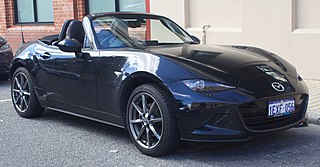
A roadster is an open two-seat car with emphasis on sporting appearance or character. Initially an American term for a two-seat car with no weather protection, usage has spread internationally and has evolved to include two-seat convertibles.
The Ace was an American-assembled car made in Ypsilanti, Michigan by the Apex Motor Car Company, which was reorganized as the Apex Motor Corporation in 1921. The initial batch of cars assembled were sent to Seattle, Washington dealer FE Earnest, who had the idea for the Ace after he was unable to secure a steady supply of new cars for his dealership.
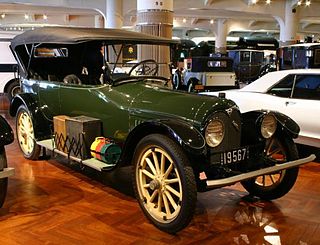
The Apperson was a brand of American automobile manufactured from 1901 to 1926 in Kokomo, Indiana.

Singer Motors Limited was a British motor vehicle manufacturing business, originally a bicycle manufacturer founded as Singer & Co by George Singer, in 1874 in Coventry, England. Singer & Co's bicycle manufacture continued. From 1901 George Singer's Singer Motor Co made cars and commercial vehicles.

Elmore Manufacturing Company was a manufacturer of veteran and brass era automobiles and bicycles (1893–97), headquartered at 504 Amanda Street, Clyde, Ohio, from 1893 until 1912. The company took its name from a small parcel of land in Clyde with the name Elmore associated with it where a stave mill was established originally, then evolved into bicycle production. The village of Elmore, Ohio is located 20 mi (32.2 km) to the east. Founded by Harmon Von Vechten Becker and his two sons, James and Burton, the Elmore used a two-stroke engine design, in straight twin or single-cylinder versions. They later produced a straight-3 followed by a straight-4 beginning in 1906 until production ended in 1912. The company advertising slogan was "The Car That Has No Valves", referring to the two-stroke engine.

The Lexington was an automobile manufactured in Connersville, Indiana, from 1910 to 1927. From the beginning, Lexingtons, like most other Indiana-built automobiles, were assembled cars, built with components from many different suppliers. The Thoroughbred Six and Minute Man Six were popular Lexington models.

The Marion was an automobile produced by the Marion Motor Car Company in Indianapolis, Indiana from 1904 to 1915.

Graham-Paige was an American automobile manufacturer founded by brothers Joseph B. Graham (1882-1970), Robert C. Graham (1885-1967), and Ray A. Graham (1887-1932) in 1927. Automobile production ceased in 1940, and its automotive assets were acquired by Kaiser-Frazer in 1947. As a corporate entity, the Graham-Paige name continued until 1962.
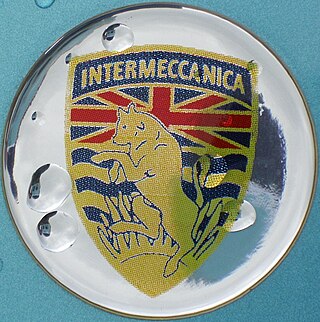
Intermeccanica is an automobile manufacturer, founded in Torino, Italy, in 1959 by Frank Reisner. It subsequently moved first to the United States, then to Canada, and is currently headed by Frank's son, Henry Reisner.
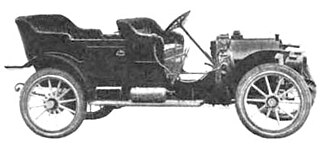
The Herreshoff was an automobile built in both Detroit, Michigan, and Troy, New York, by the Herreshoff Motor Company from 1909 to 1914. The Herreshoff started as a small car with a 24 hp (18 kW) four-cylinder engine, and was made with three different models. Later models were upgraded to six-cylinder engines up to 3.8 liters capacity. For 1911, Herreshoff had a roadster with a rudimentary rumble seat at US$950 ; by contrast, the high-volume Oldsmobile Runabout went for US$650, the Ford Model N and Western's Gale Model A were US$500, the Black was $375, and the Success, US$250.
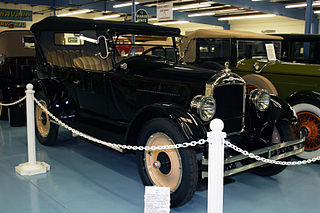
The Jewett was an automobile built in Detroit, Michigan by the Paige-Detroit Motor Car Company from March 1922 through December 1926. The Jewett was named after Harry M. Jewett, president of Paige-Detroit.

The Metz Company was a pioneer brass era automobile maker established by Charles Herman Metz in Waltham, Massachusetts, from 1909 to 1922.

The Cole Motor Car Company was an early automobile maker based in Indianapolis, Indiana. Cole automobiles were built from 1908 until 1925. They were quality-built luxury cars. The make is a pioneer of the V-8 engine.

Mitchell was a major brass-era automobile marque in Racine, Wisconsin, from 1903 to 1923.

The Auburn Speedster was an American car, manufactured by the Auburn Automobile Company of Auburn, Indiana and manufactured in Union City, Indiana. A total of 887 cars were manufactured between 1928 and 1936, across 3 series. The first two series were designed by stylist Alan Leamy. The Auburn 851 Speedster of 1935 was styled by designer Gordon Buehrig, who also was responsible for the Cord Model 810. Al Jenkins broke 70 America speed records in the 1935 car.

H. C. S. Motor Car Company was a short-lived Indianapolis, Indiana, automobile manufacturer. It may have built as many as 3,000 cars between the summer of 1920 and 1926, when its doors were closed by its creditors.

The Oakland Model A was the first four-cylinder engine offered by the Oakland Motor Company in 1907 which became a division of General Motors in 1909. The Model A was developed and manufactured from former Oakland Motor Company sources while the engine was provided by Northway Motor and Manufacturing Division of GM of Detroit. The Model A was available in several body styles and prices ranged from US$1,300 to US$2,150. Once Oakland became a division of GM, Oldsmobile and Buick shared bodywork and chassis of their four-cylinder models with Oakland. Manufacture of the Oakland was completed in Pontiac, Michigan. Oakland (Pontiac) wouldn't use another 4-cylinder engine until 1961 with the Pontiac Trophy 4 engine.

The Oakland Six was the first six-cylinder engine offered by the Oakland Motor Company in 1913 which became a division of General Motors in 1909. The Oakland Six was offered in many different model names that changed every year, along with several body styles and engine displacements until 1929, when the V8 was reintroduced, then in 1931 Oakland was renamed Pontiac. When Oakland became a division of GM and introduced the Oakland Four, Oldsmobile and Buick shared bodywork and chassis of their six-cylinder models with Oakland. When Chevrolet became part of GM in 1917, Oakland chassis and bodywork were shared with Chevrolet. Manufacture of the Oakland was completed in Pontiac, Michigan.




























